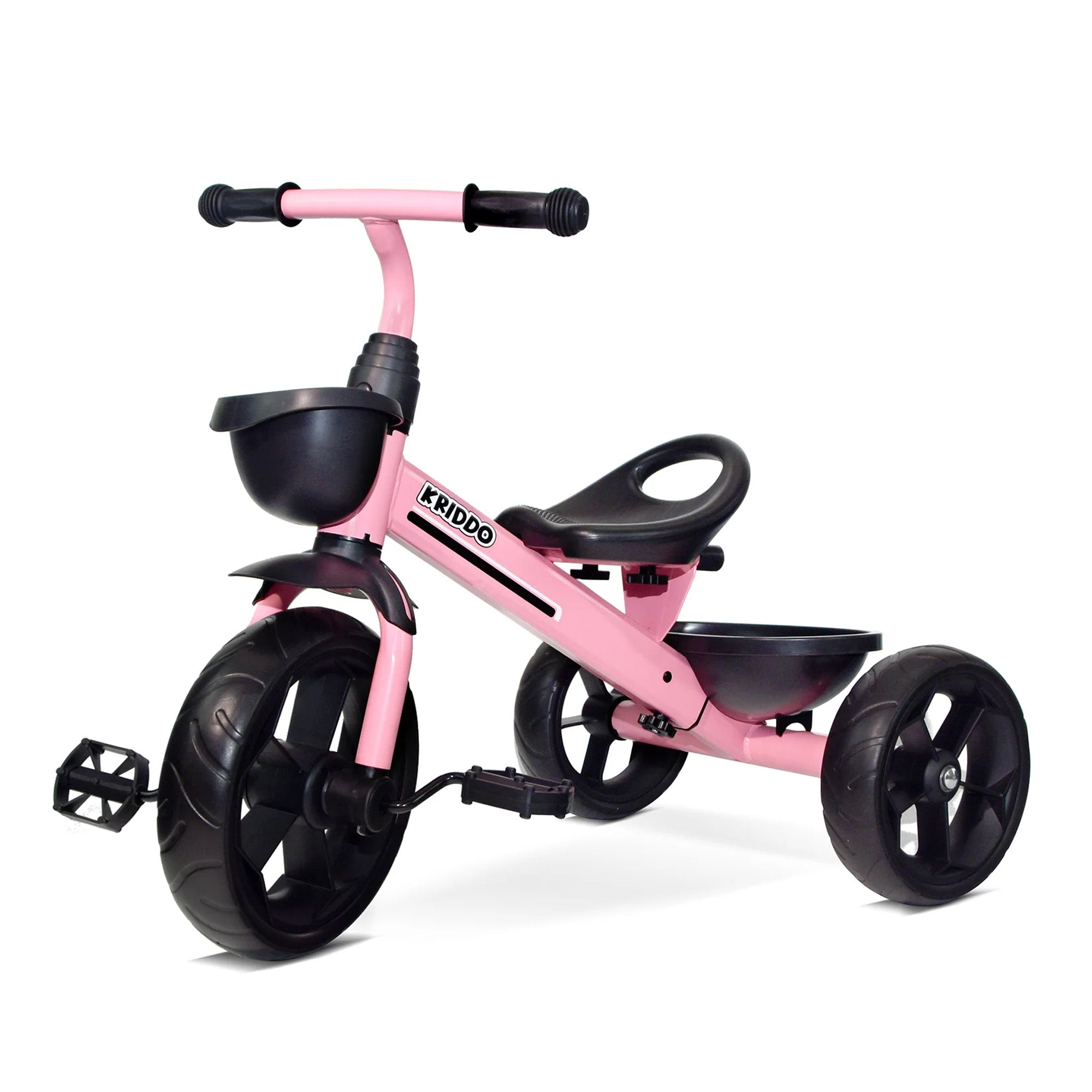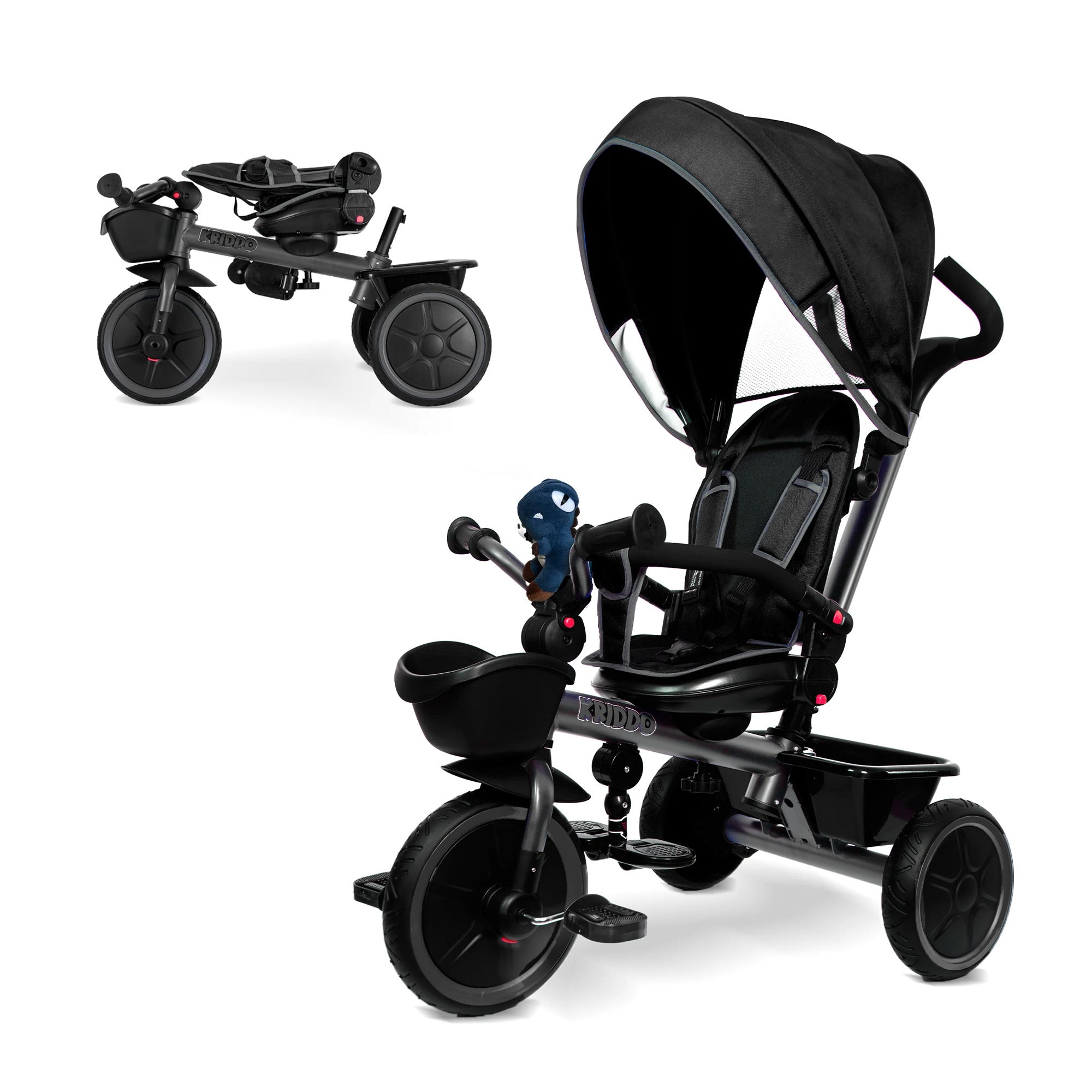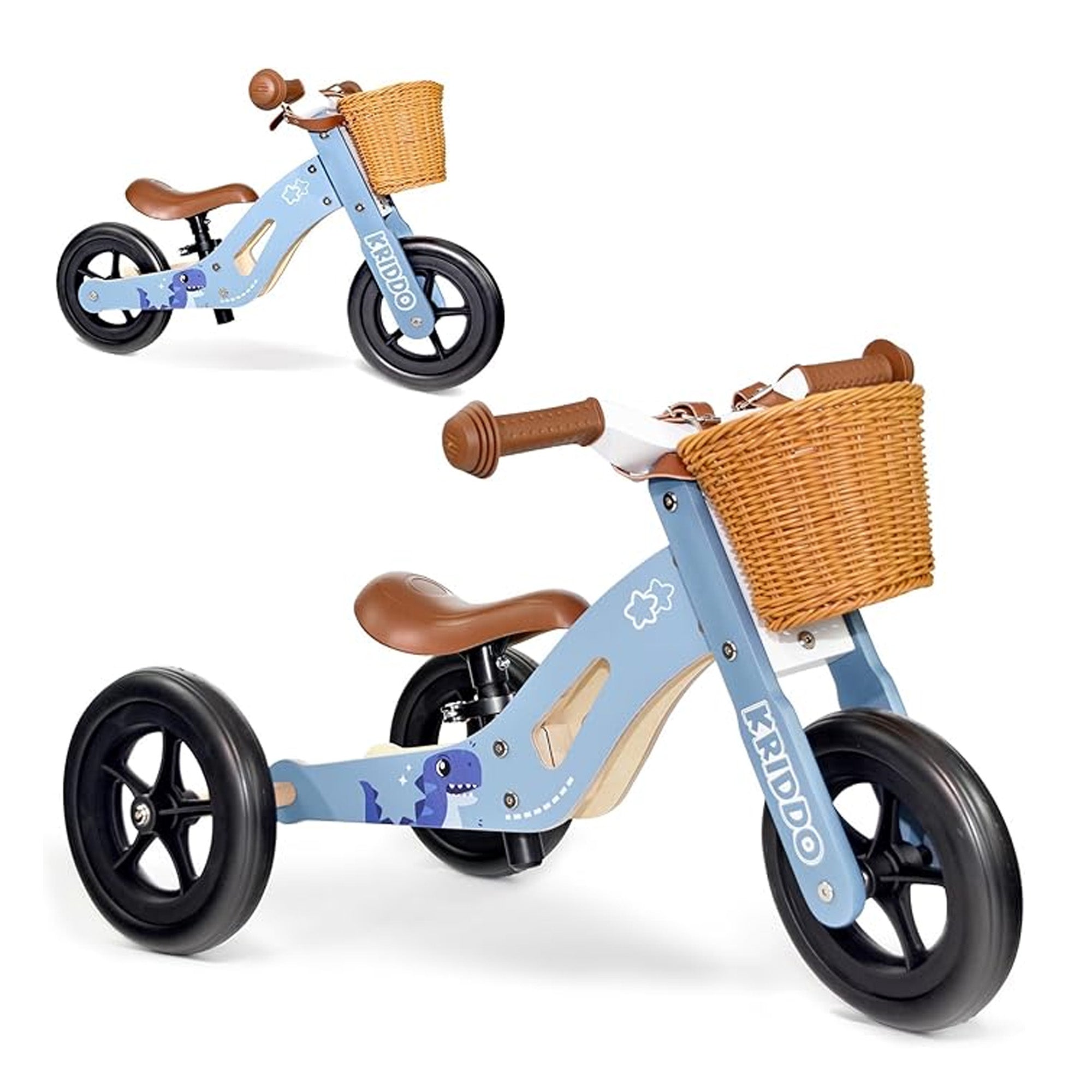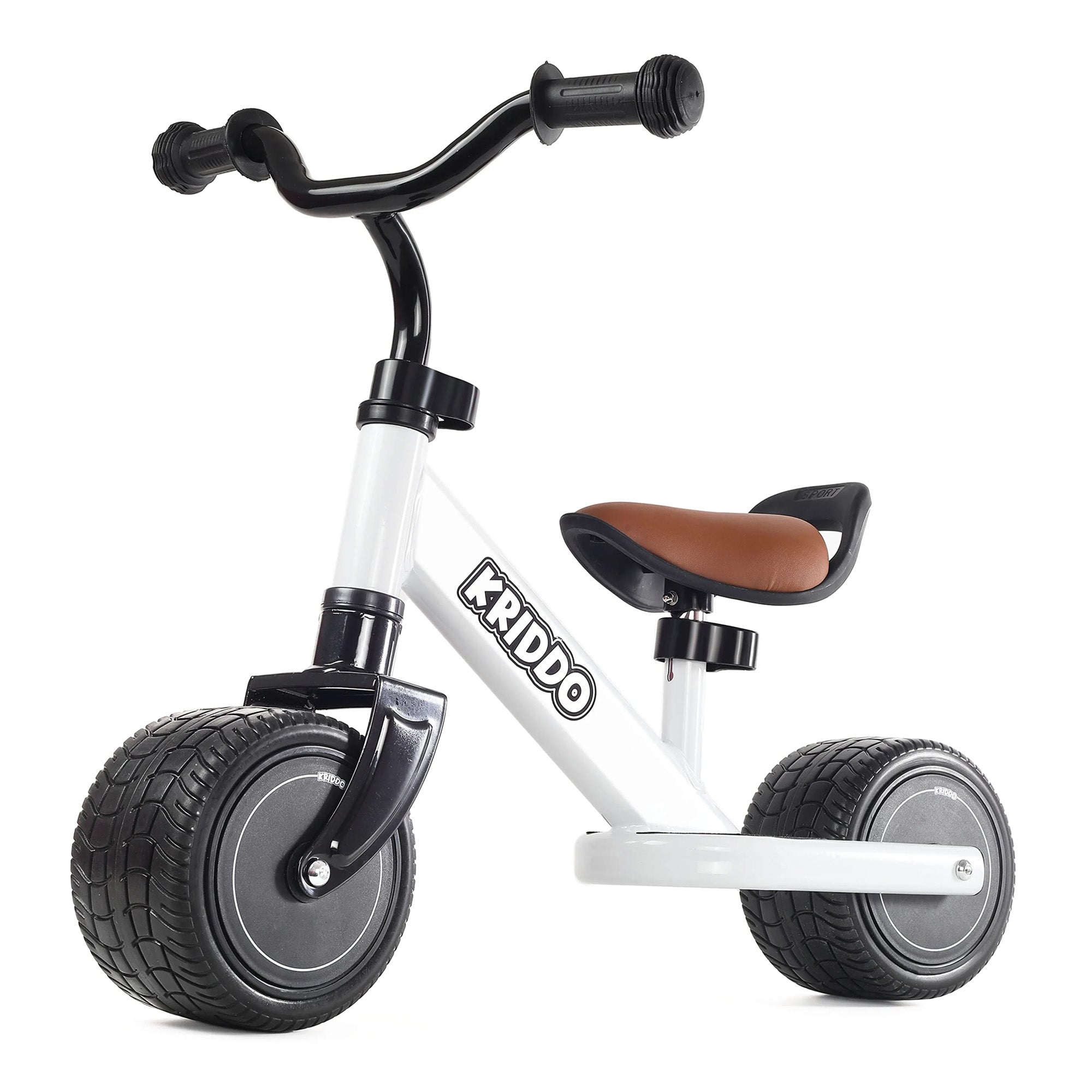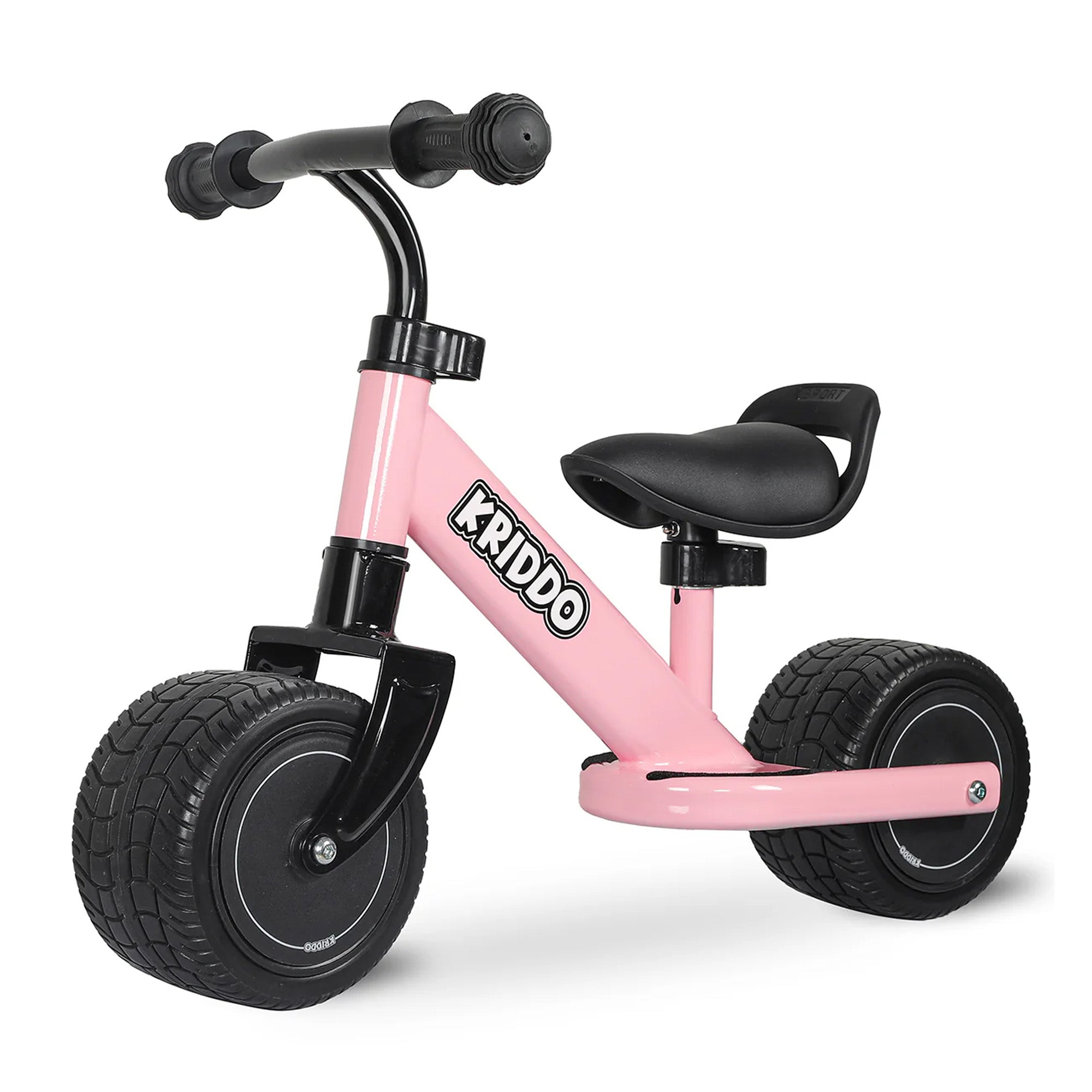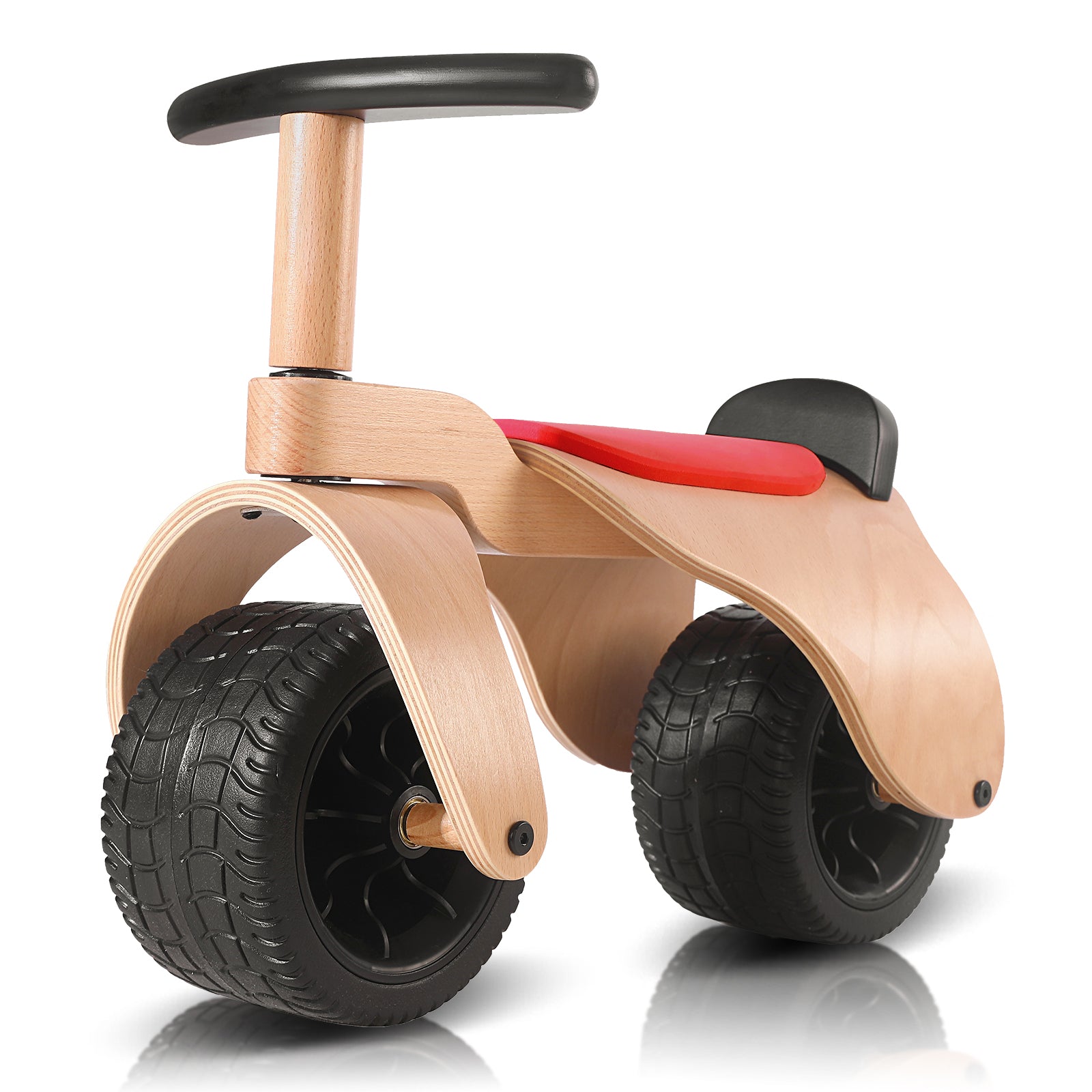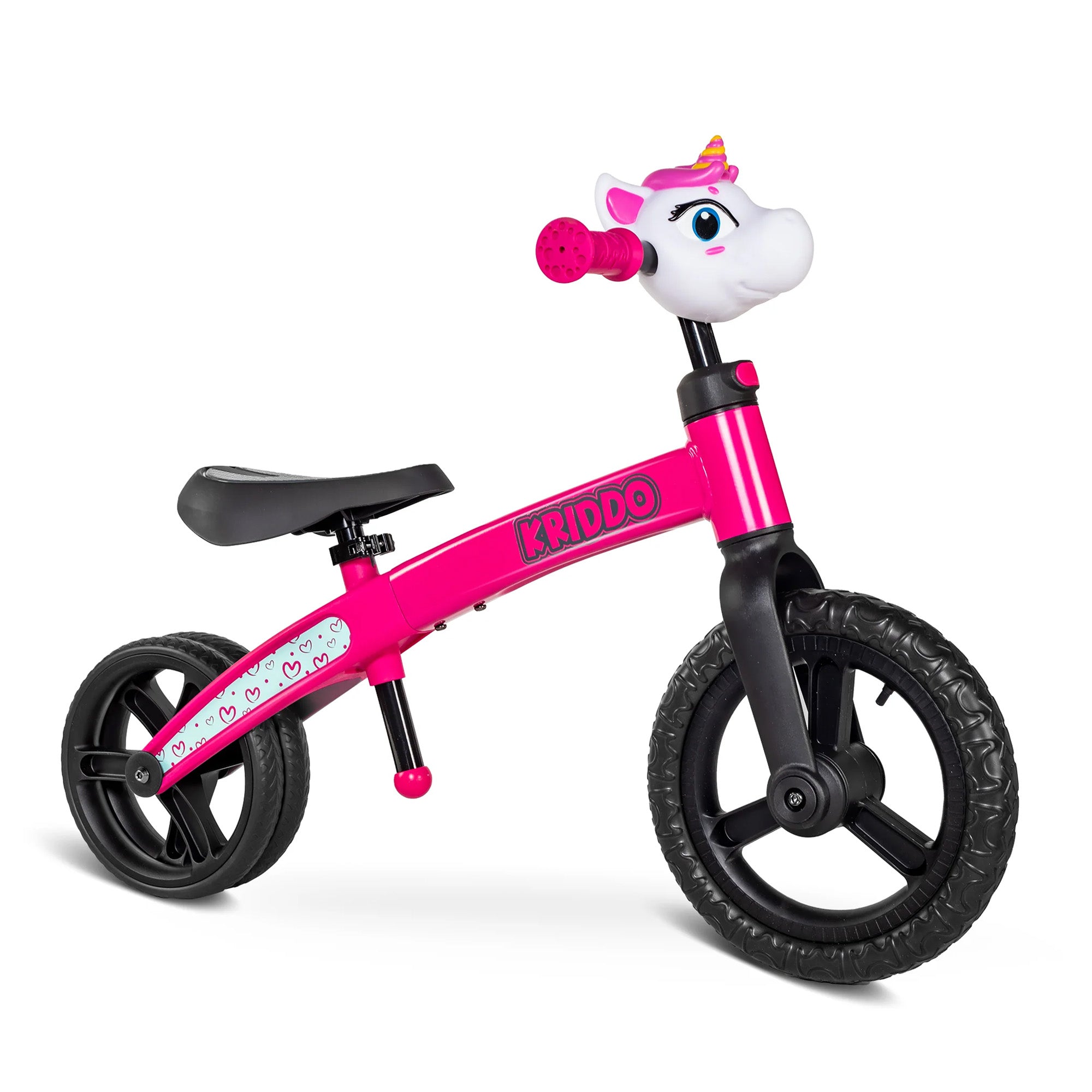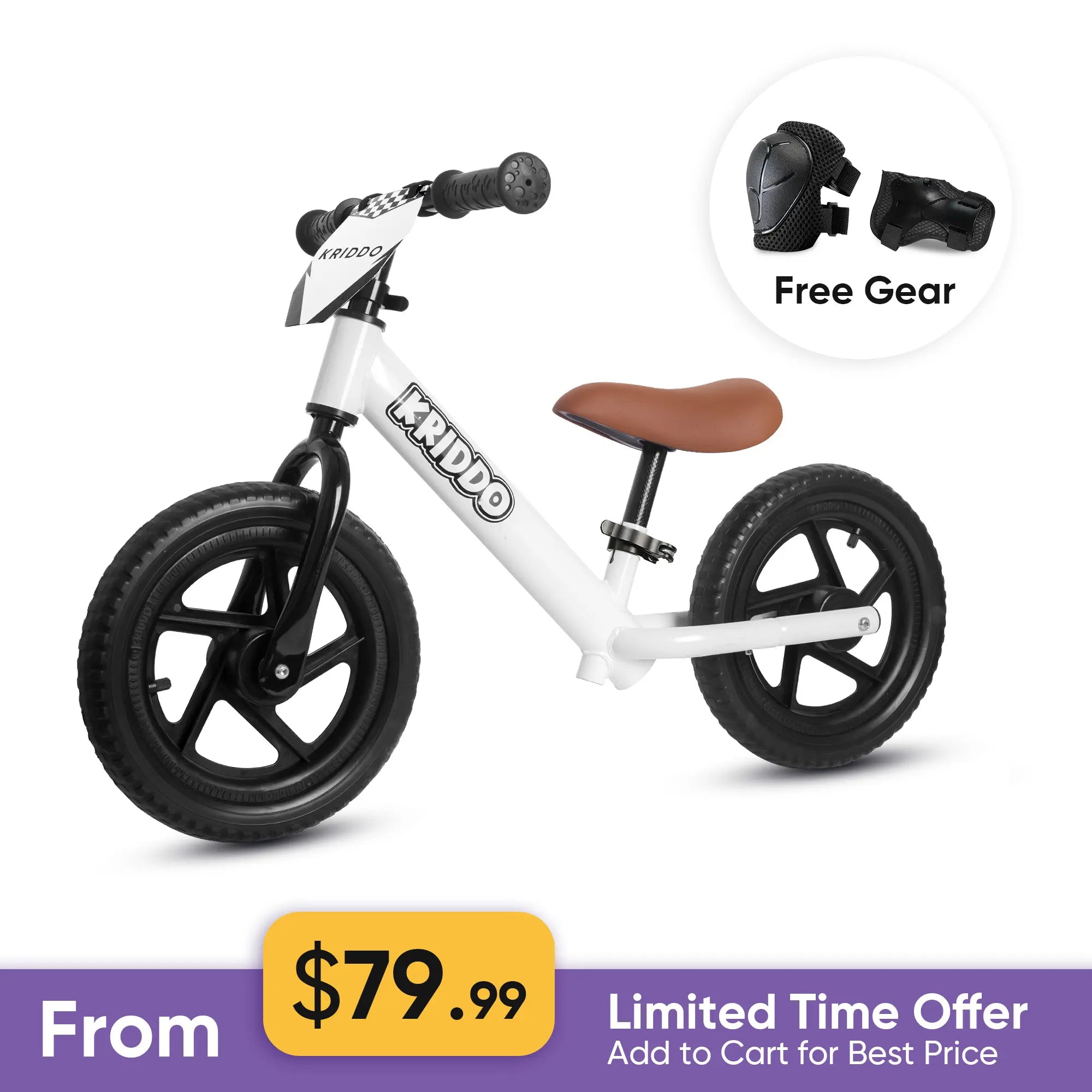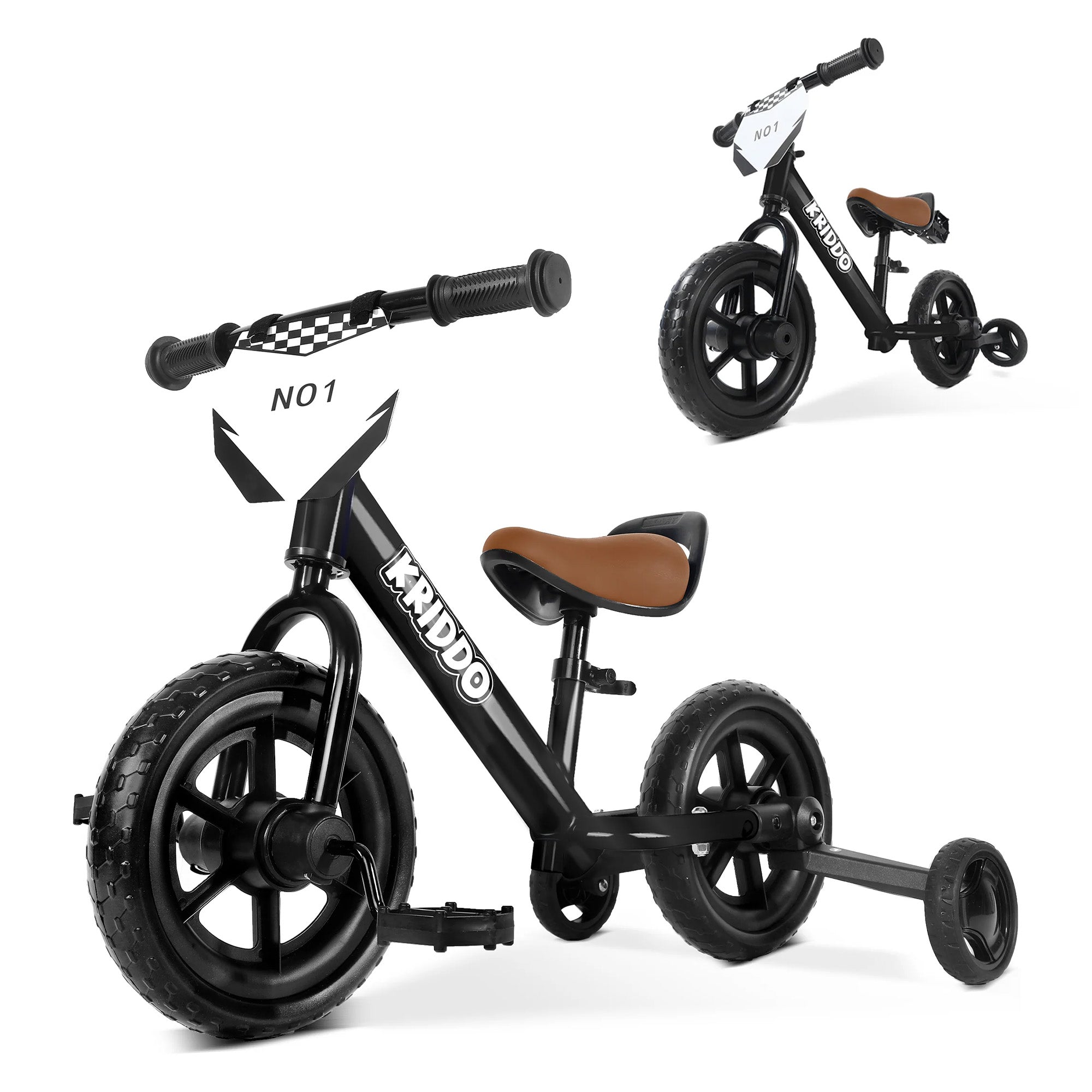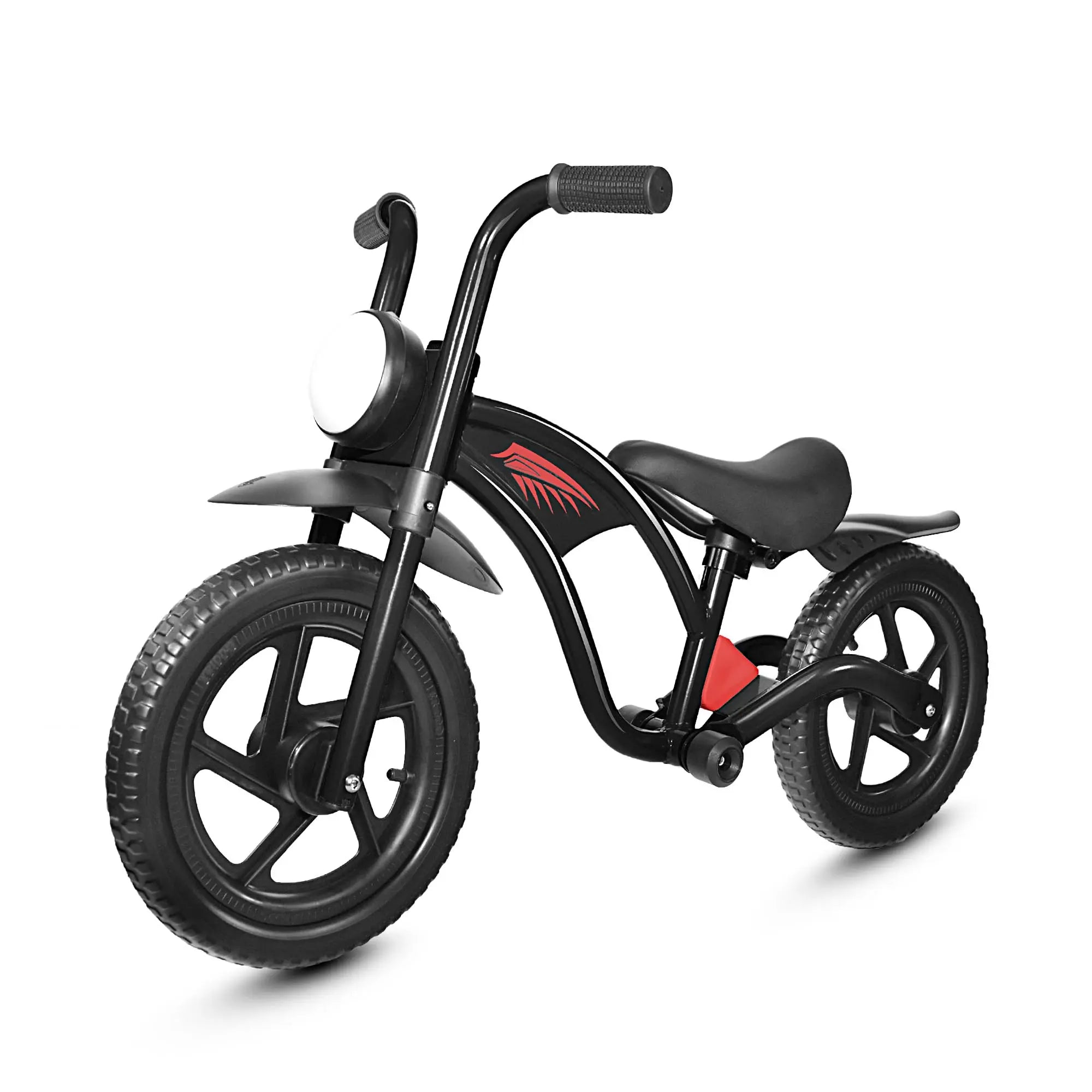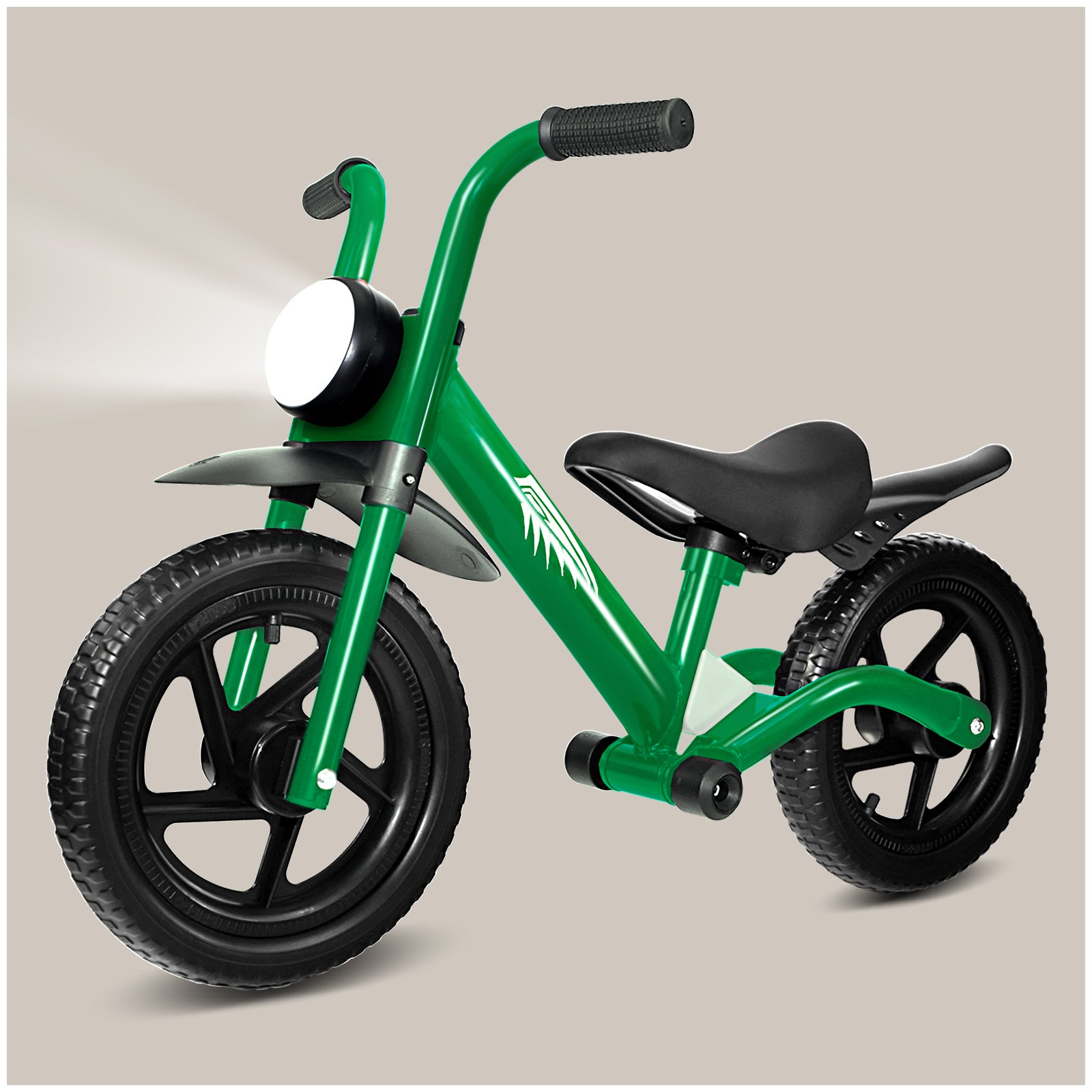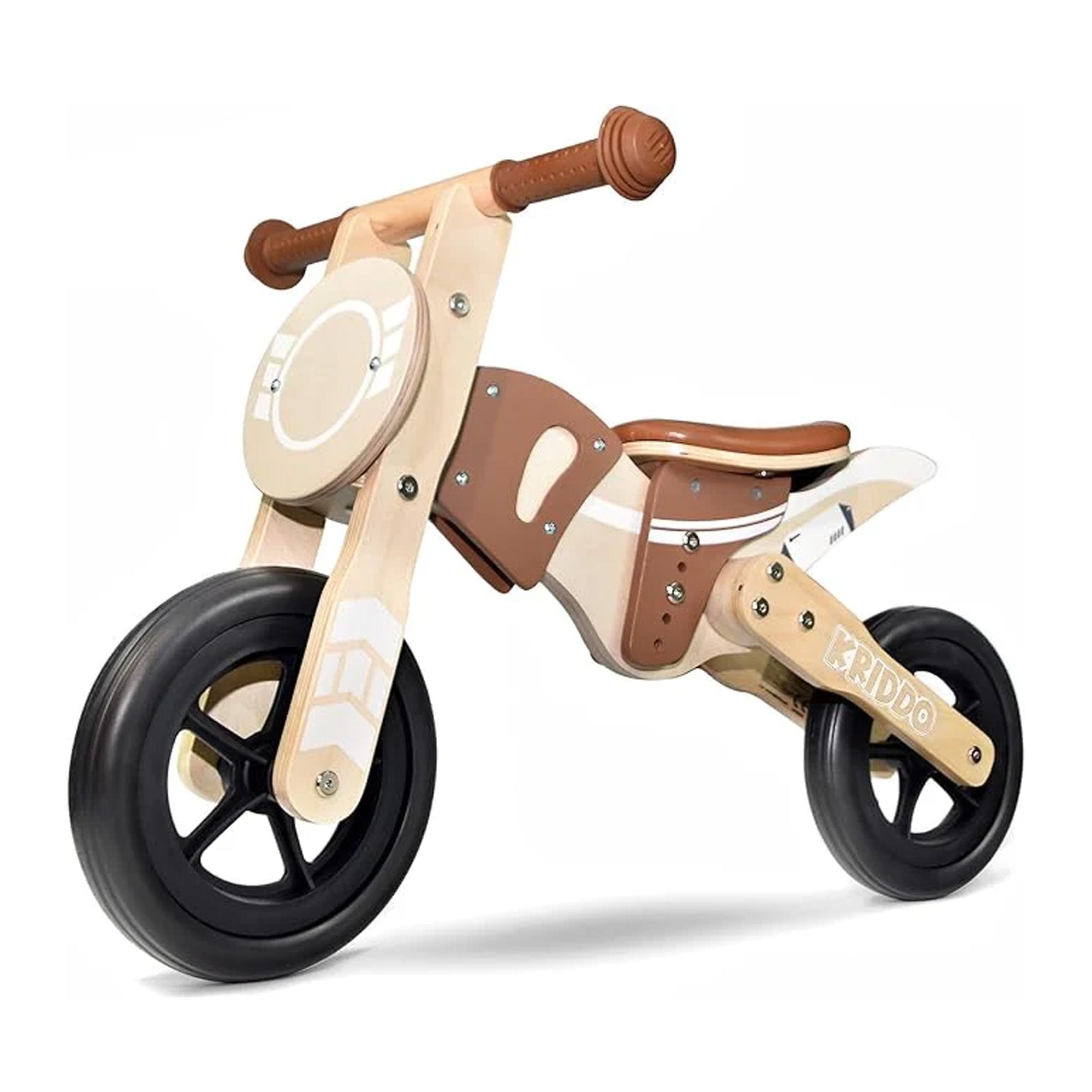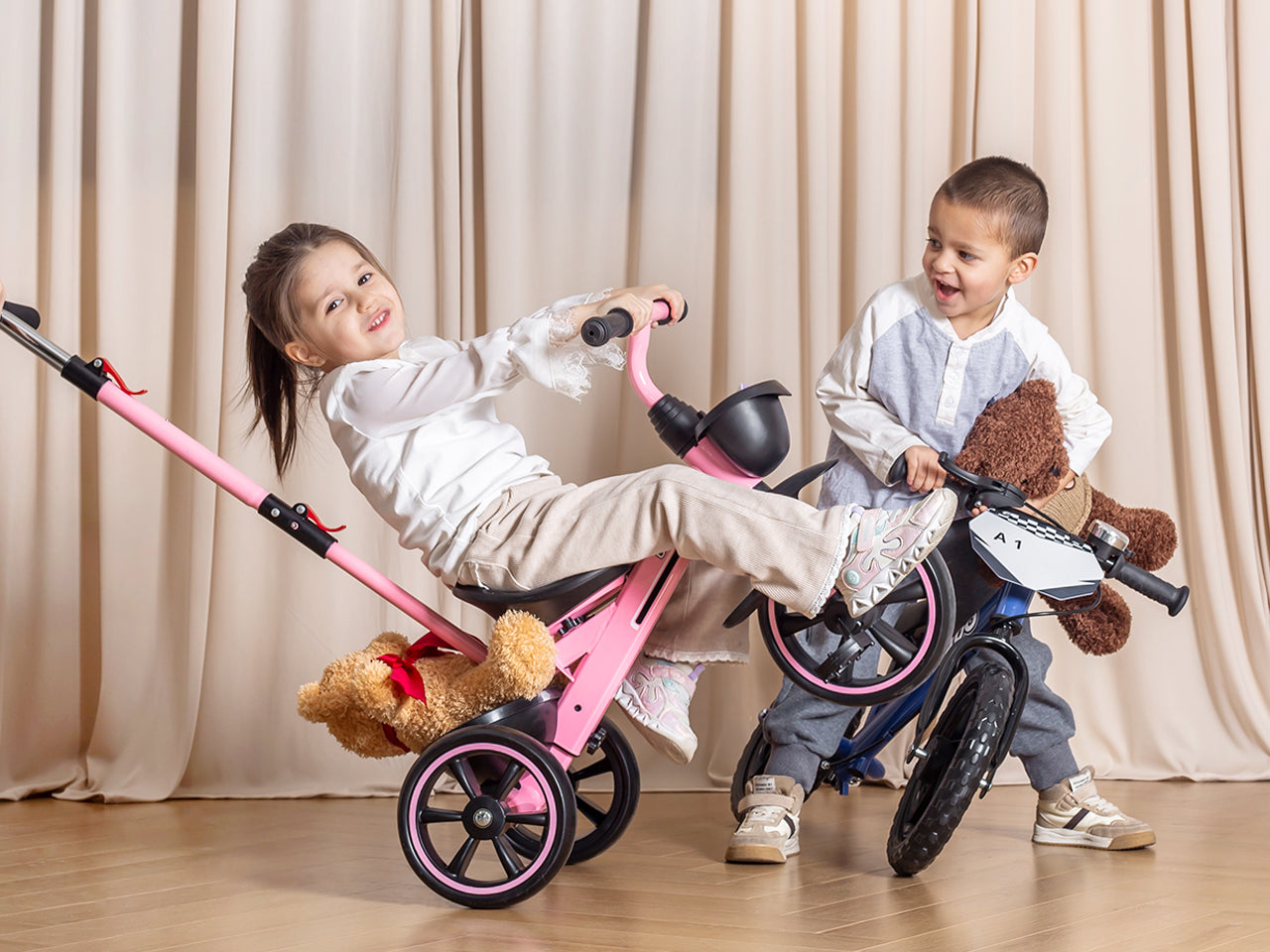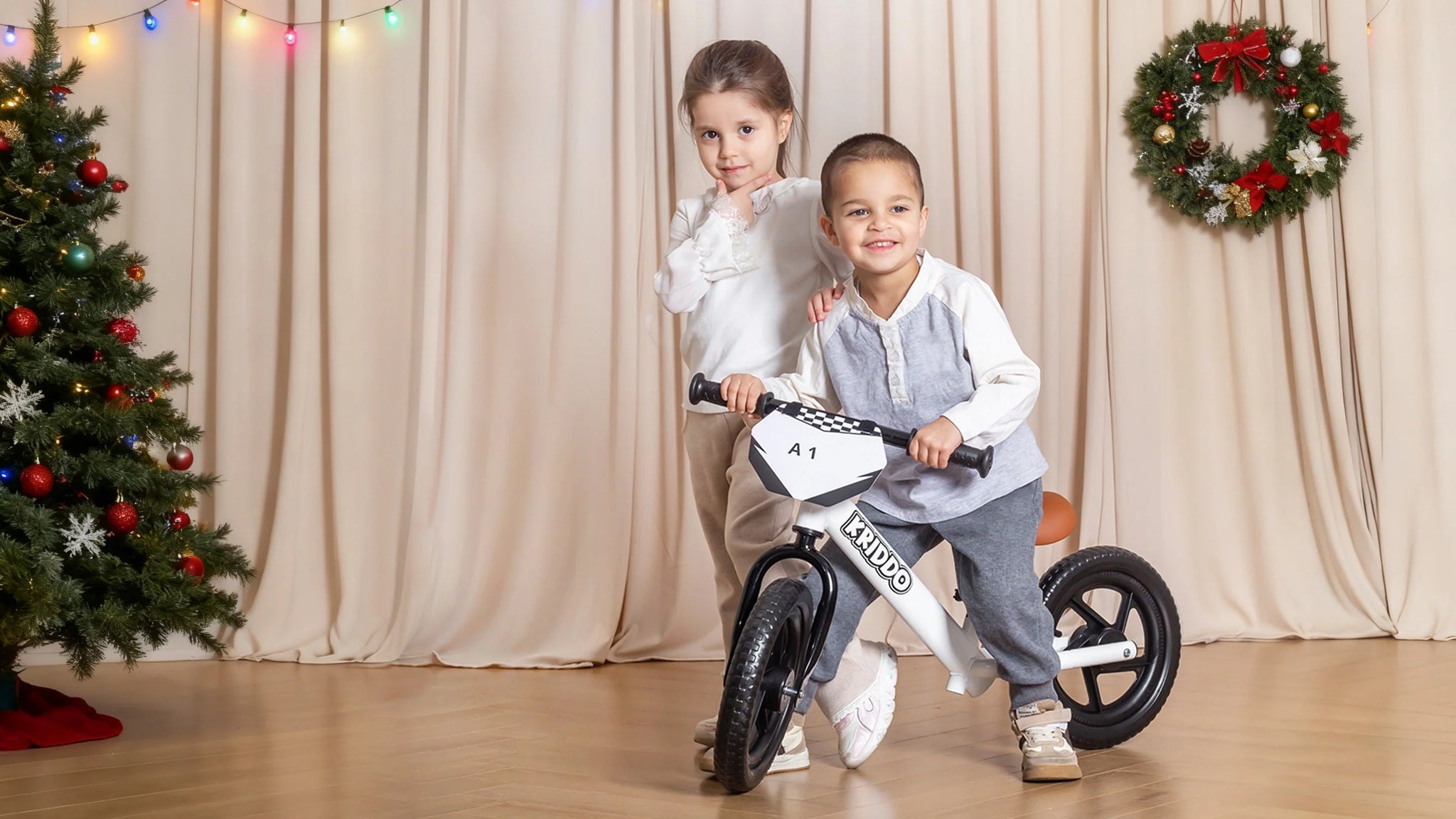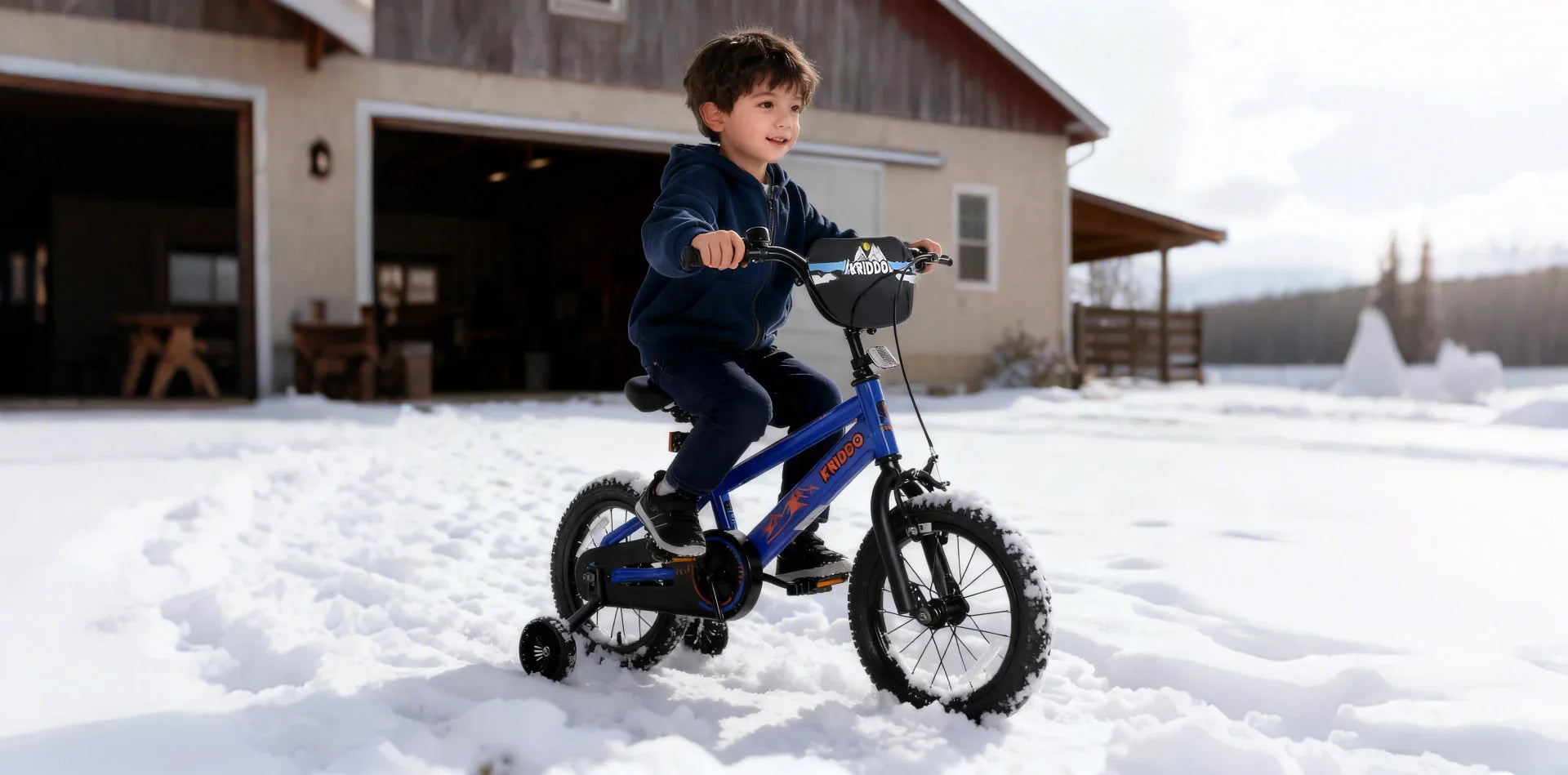Is a Baby Scooter the Right First Ride?
Why KRIDDO Kids Scooters Are Changing the Game
Coco | 12th,June
Every parent wants their child to have a fun, safe, and developmentally enriching start to outdoor play. And when your little one starts showing interest in ride-on toys, the options can feel endless—tricycles, balance bikes, scooters... which one should come first?
Here’s the good news: if your child is between the ages of 1.5 and 4, a kids scooter, especially a 5-in-1 baby scooter, might just be the perfect place to start.
Let’s break down what makes baby scooters such a great choice for toddlers, how they compare to other ride-on toys, and how to choose the right one for your child’s growth and ability.
What Is a Baby Scooter?

A baby scooter is a child-friendly, foot-powered vehicle designed specifically for toddlers. Think of it as a more intuitive, easy-to-handle version of a regular scooter, often with three wheels for better stability, a wide deck, and adjustable handlebars.
Even better? KRIDDO kids scooters are 5-in-1 designs, meaning they can transition with your child through multiple stages of development. KRIDDO 5-in-1 baby scooter include:
A ride-on trike mode for 1-year-olds (with a seat and push bar)
A parent-guided mode for assisted rides
A seated scooter mode for early balance training
A standing scooter mode for toddlers ready to scoot
A handlebar for growing kids
It’s essentially five ride-on toys in one, which makes it a great value—and super versatile.
Why Not Just Start with a Bicycle?

It’s a common assumption that once a toddler turns two, it’s time for a pedal bicycle. And yes, most kids around age 2 do start showing interest in pedal-powered toys. But that doesn’t mean they’re quite ready to pedal, steer, and balance all at once.
In fact, studies in child motor development suggest that while toddlers may want to ride, most don’t fully develop the coordination to pedal and steer confidently until around age 3. Even more important: true balance—the kind needed for two-wheel bikes or scooters—often doesn’t come until closer to age 4.
So what fills the gap?
This is where three- or four-wheel baby scooters shine.
Comparing Baby Scooters, Tricycles, and Balance Bikes
You might be wondering, “What’s the real difference between all these ride-on toys?”
Here’s a quick comparison based on developmental benefits and ease of use:
| Ride-on Type | Skills Developed | Ease of Use (For Toddlers) | Long-Term Benefit | Parental Recommendation |
|---|---|---|---|---|
| Baby Scooter | Balance, leg strength, steering | Easy (especially 3-wheel) | Moderate to high | ✅ Yes |
| Tricycle | Pedaling, coordination | Easy to moderate | Moderate | ✅ Yes |
| Balance Bike | Core balance, bike control, steerin | Moderate to hard | Very high | ✅ Yes |
While baby scooters are easy for most toddlers to master and offer loads of fun, balance bikes require more coordination and tend to be best for slightly older or more advanced toddlers (closer to 3 or 4).
Tricycles, especially with pedals and parental control bar, give kids a fun and stable way to develop balance, coordination, and independence—all while enjoying their first taste of freedom on wheels.
Why Choose KRIDDO 5-in-1 Baby Scooter?

If you’re a practical parent who also wants maximum play value,the KRIDDO 5-in-1 kids scooter is hard to beat.
Here’s why parents love them:
Longevity:
One scooter grows with your child for years.
Confidence-building:
Toddlers can start in seated or push modes and gradually build up to standing scooting.
Muscle development:
Scooting strengthens leg and core muscles without overwhelming toddlers.
Compact and portable:
Many models fold or disassemble easily for trips to the park or grandma’s house
Plus, they’re just plain fun. Kids love the freedom and mobility, and parents love seeing their children so proud and active.
What to Look for When Buying a Baby Scooter
Not all scooters are created equal, so here are a few things to keep in mind when shopping for the perfect one:
Stability: Look for wide decks and three wheels (two in front, one in back) for better balance.
Adjustability: Make sure the seat and handlebars can be raised as your child grows.
Weight Limit: Check the manufacturer’s guidelines to ensure the scooter is safe for your child’s current and future weight.
Safety Gear: Don't skip the helmet and protective gear—even at slow speeds, falls can happen!
Final Thoughts: Is a Baby Scooter Worth It?
Absolutely. A baby scooter, especially a 5-in-1 baby scooter, is not only a great first ride-on toy—it’s also an investment in your child’s physical development, coordination, and confidence.
It bridges the gap between sitting and biking, helps toddlers develop muscle control and motor planning, and—most importantly—gets them outside and moving.
And in a world where screen time is constantly battling for their attention, that alone makes it worth every penny.
So go ahead. Let your toddler roll into their next stage of independence—with a little help from three wheels and a whole lot of fun.








